I think it was in 1997 that Pat Wisniewski came to visit and helped me
build this huge climbing structure in the back yard. I wanted something
so high that it
would be worth the effort to climb up to the top and view the world
around.. It was never really finished as some of the railings needed
tops. Ironically, the
railings were the only parts damaged when I recently took the climbing
structure down with the idea of reinstalling it in the back yard of a
friend of our neighbors
Sue and Sheila. I had a plan how to take it down and it was mostly a
workable plan. The structure came down in a very controlled fashion and
there is a movie
you can watch to get an idea of how fast that happened.
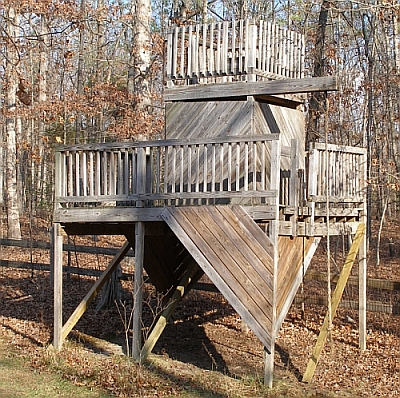
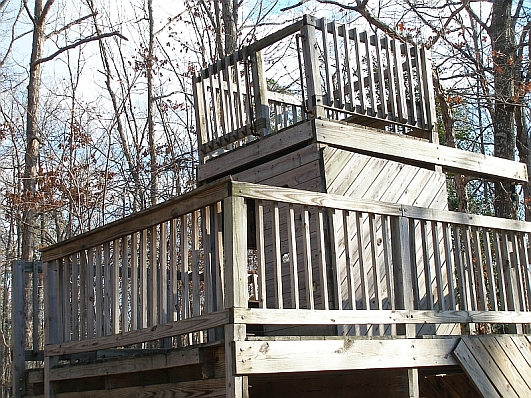
The climbing rope got a lot of use. It was an "industrial grade"
climbing rope. It was satisfying to see my boys climbing up that rope.
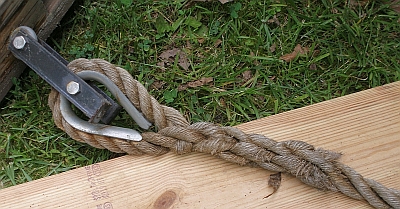
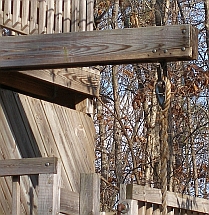
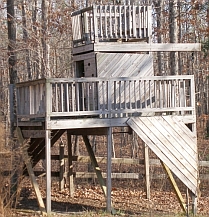
There was a plan and a concept for taking down the climbing
structure. Here's a movie of the toppling. movie 4,378 kB
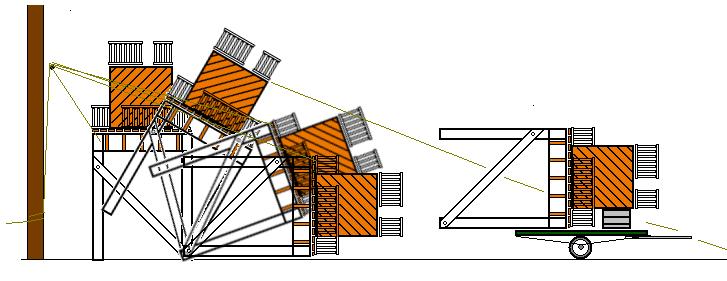
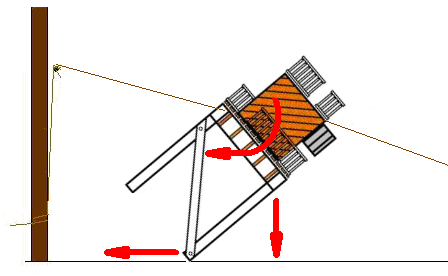
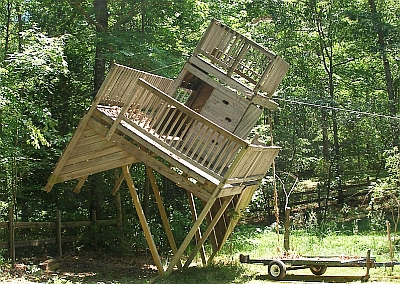
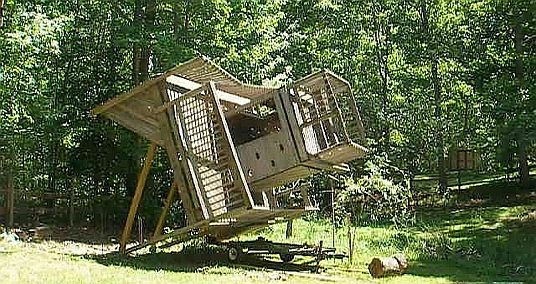
The block in tackle came in handy for a couple of operations. One end
is an older wooden block and the other is a newer galvanized block.
They worked together
fine. I used lots of cable and Crosby clamps in this operation as well
as a railroad jack that can lift as much as 20 tones. The block and
tackle, the railroad jack
and most of the steel cable ( 5/16" 7 x 19 plow iron cable) came from
David Doehlert. I also used a lot of 4" x 4" wood cribbing to help lift
and lower the structure.
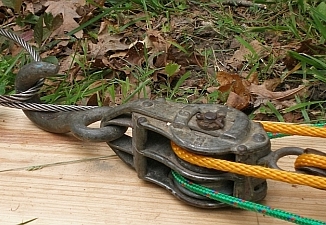
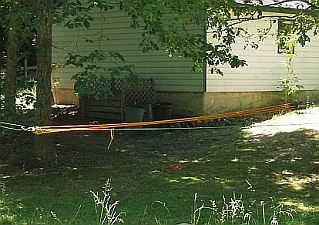
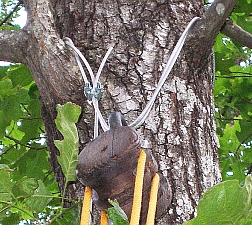
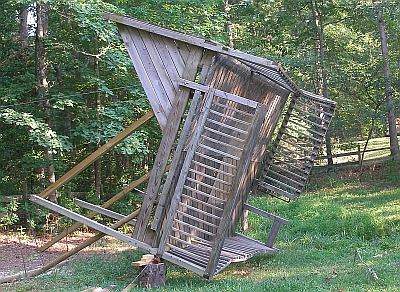
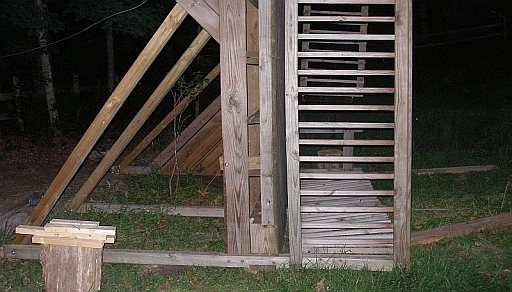
This one horsepower 12 volt electric winch made life much easier. I
recharged the battery after every operation. However, I never had to
stop at any point
due to the battery having run out of capacity. My battery worked
well. It is pictured a few lines below.
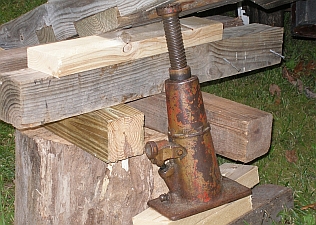
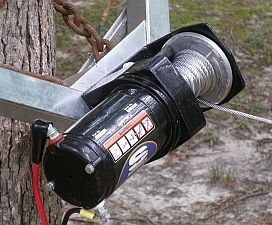
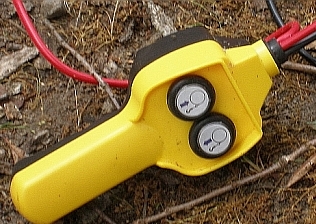
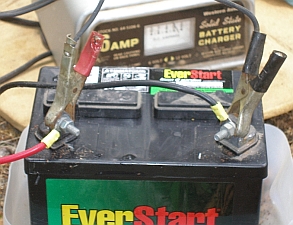
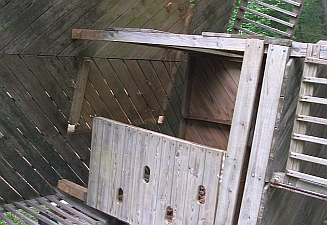
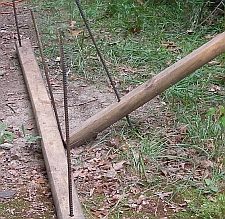
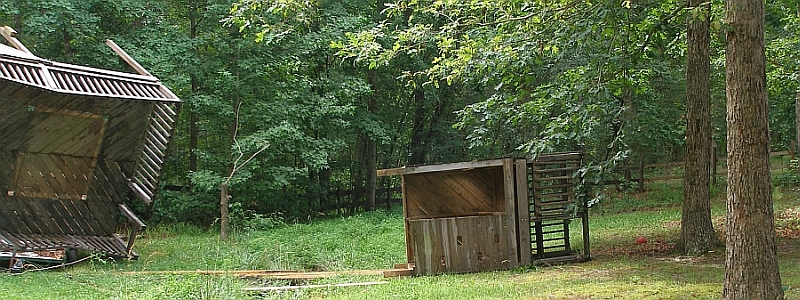
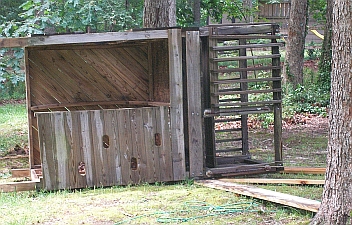
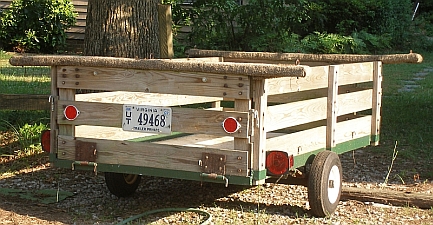
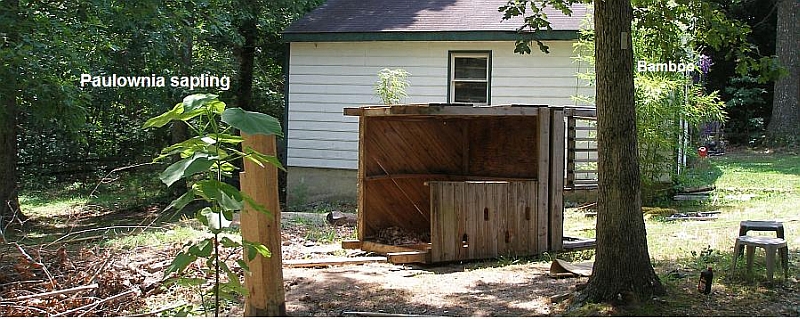
Now I needed an anchor in the right position to pull against. To get
the
club-house portion up the hill I used the Le Sabre as an anchor.
When I tried that for the large base of the structure, I just pulled
the Le Sabre sideways about five feet before I gave up. I may also
place some section of water pipe between the base and the planks being
used as skids, if there is too much drag to move it easily.
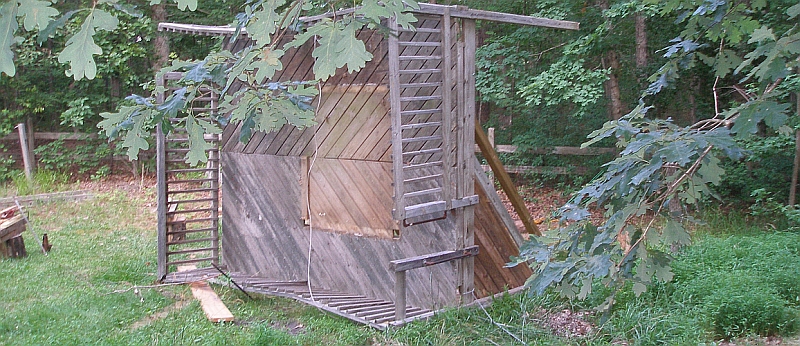
Pulling the structure up the hill (see below) required two new
techniques. One, was placing lengths of steel pipe in between the base
of
the structure and the wood planks acting as a skid. Even with the pipes
reducing drag, neither the truck or the big Le Sabre were massive
enough remain stationary as an anchor to pull against. The problem was
solved by running a 5/16" 7x19 steel
cable from a tree in the
back yard to the Oak tree that was halfway up the driveway. Then I
fixed a chain to various points along that
cable depending on where
I needed the winch to be.
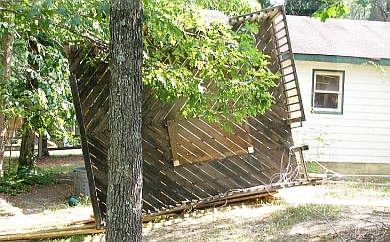
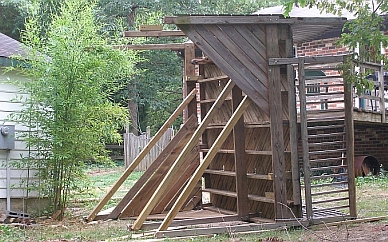
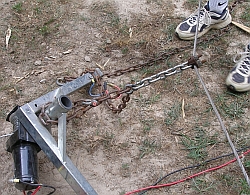
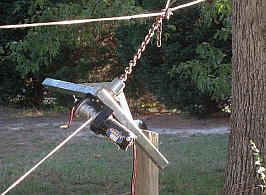
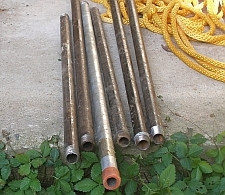
Above are pictures showing (left to right) how winch is secured in
middle of cable, winch on Oak in driveway, and pipes used as rollers.
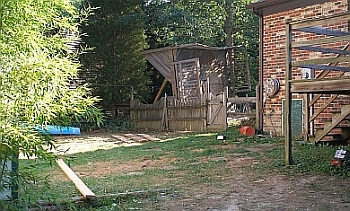
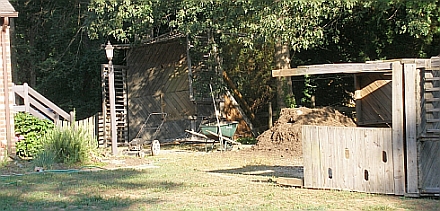
This first picture on the left shows that the structure is really on
the other side of the fence and out of the back yard and now in the
driveway.
The picture on the right shows the two halves of the structure in the
driveway. There is a big pile of our neighbor's mulch still to be moved.

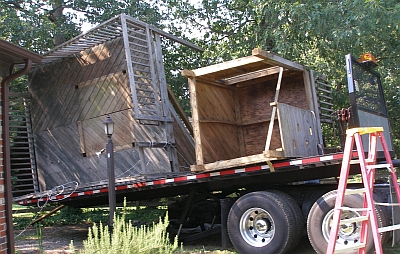
Dawn rented a tilt bed truck and driver. It was perfect. Their winch
was a lot stronger than my winch. We got both halves on the truck.
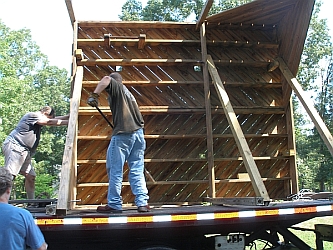
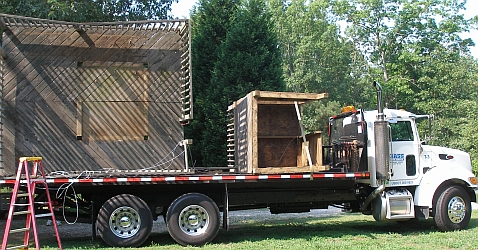
After prying it into place and attaching flags, we were ready to go the
five miles to it's new home.
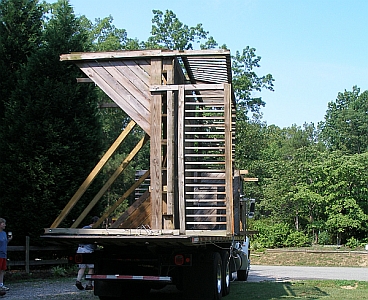
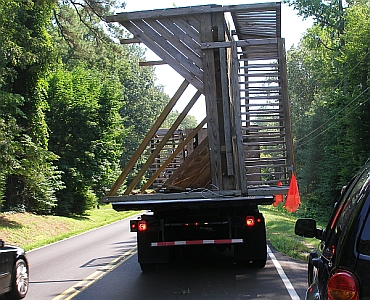
I didn't have my camera for the unloading because I left it with Julie
after our truck was rear ended by a jeep.
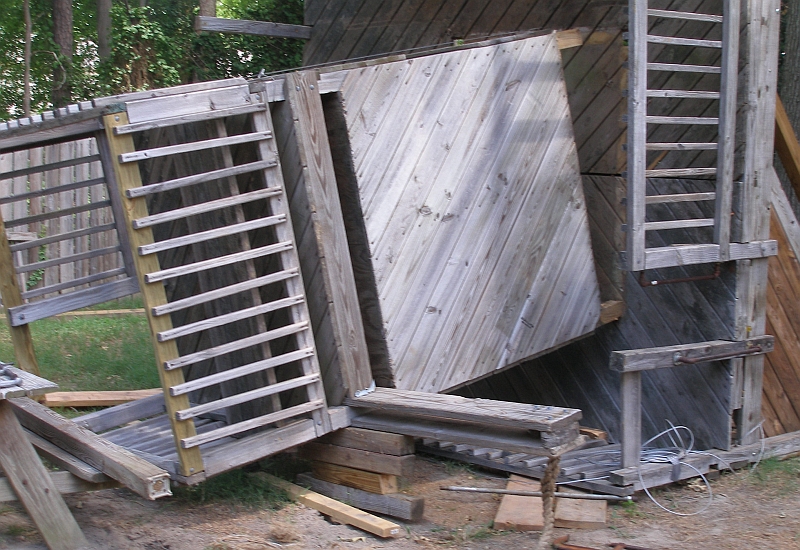
We started jacking up the club house to get it lined up to be bolted
back through the desk.

The winch allowed me to pull the two halves of the structure tightly
together. I highlighted the cables in red to make the path visible.
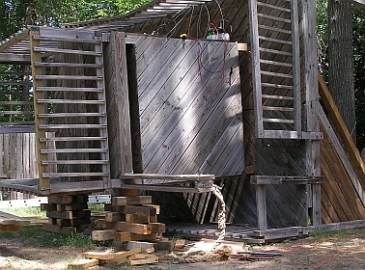
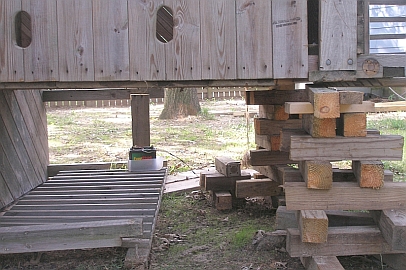
Now the climbing structure looked pretty good. It is level
and the clubhouse and the main platform are pulled together tightly.
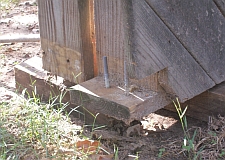
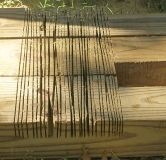
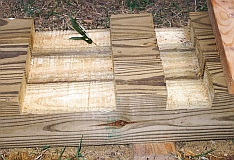
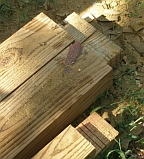
The old legs had split during moving and needed to be replaced. The 4"x
4" legs were replaced with 4" x 6" legs. The notches were
cut to allow the new legs to fit into place and support the deck under
structure. Notches also support the railing horizontal members.
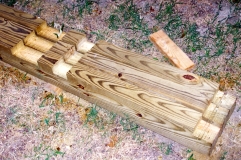
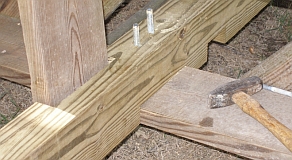

When the legs were notched, they fit into place replacing the old
splintered legs. The new structure will be more stable.
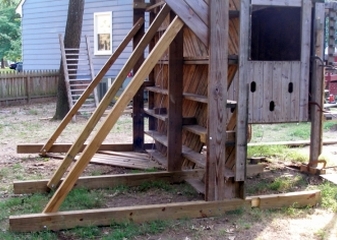
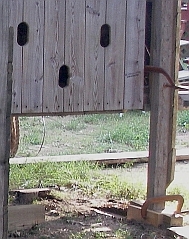
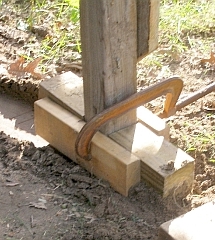
Finally all three legs have been replaced and the diagonal supports
installed. The stack of cribbing supporting the club house is
replaced with a single support with a "shoe" at the bottom to allow it
to slide as the structure is winched into position to be raised.
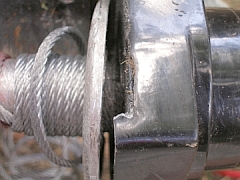
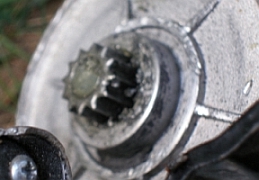
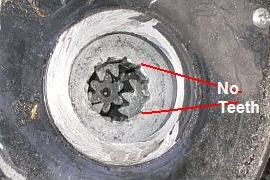
The cable got wrapped around the outside of the winch drum in the dark
and jammed it up. It keep working for a while but then
stopped. When I took it apart the second time, the problem was clear.
The internal teeth were worn away.
With the winch now completely broken further work on re-erecting the
climbing structure must wait until a new winch can be bought or
rented.
On October 4th was in Chesterfield, VA again and bought another winch
which was the same model but seemed to be slightly improved.
Unfortunately for others, the improved version was the older
discontinued model. It came without the nice hand held switch but I
still
had that from the old winch.
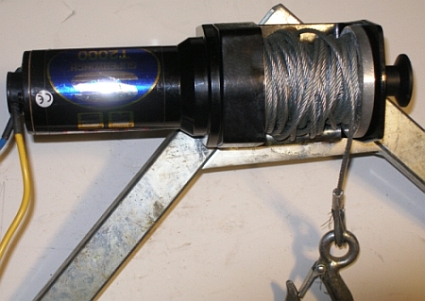
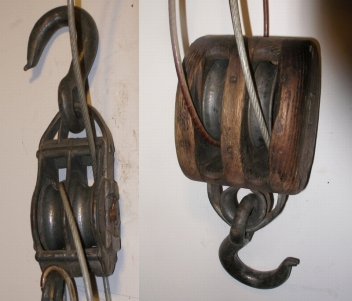

The new winch has much harder sides to the spool even though it is
obviously the same design as the old winch. My theory which is only
wild speculation is that this better winch was being obsoleted because
the new version was cheaper to make. I am happy to have a winch
as a result of doing this project.
The winch by itself was not able to lift the weight of the
climbing structure. However by using a block and tackle we could
multiple the
power of the winch nearly threefold. The drawback was that we didn't
have room or enough cable to set the block and tackle up to
do it all in one effort. It is really satisfying to be able to
put the block and tackle to good use after all these years. Now with
the winch
I have a new capability.
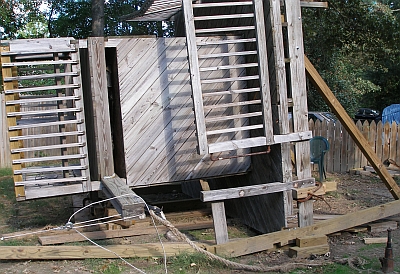
The first task was to turn the entire structure around. It was harder
than we expected because it was so top heavy with the playhouse
already in place. This was where the winch had failed the month before.
We jacked it level and then had to keep shifting the pile
of cribbing as we pulled it around by the climbing rope bar in the
foreground.
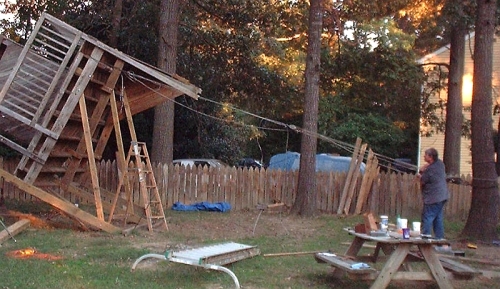
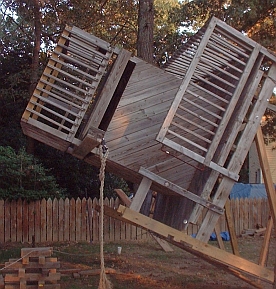
The other thing that I brought was a very old block and tackle that
David Doehlert had given me years ago. The two sets of pulleys
were from different generations, one mostly wooden with still shafts
and wheels and reinforcing and the other all steel. They worked
well together and they allowed the winch to lift the structure from
almost level pulling from what was the highest point at that moment.
I ran into some trouble with what were allegedly 3/8" Campbel cable
clamps. I think these were inferior imitations and I will have pictures
to show the problems shortly. Anyway, I had to stop at 4:00 on Sunday
with the structure pretty much at the point shown in the photos
above and get new clamps, this time from Wall-Mart. The first set were
from a local hardware store chain. With the ratio of about 3:1
I could only bull the cable about 8 feet before the blocks were
together and I had to secure the load and shorten the cable
coming from
the structure.
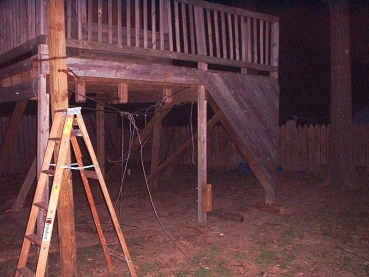
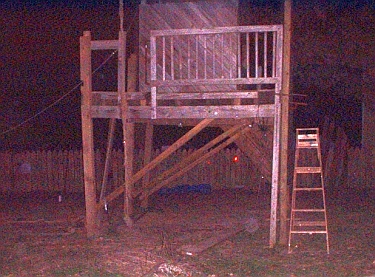
At the very end when the structure was near the balance point, I took
the block and tackle out and had Dawn on the winch and I
went through a fence to a huge tree on the other side from the winch
and with a heavy cable that went around the tree three times,
I was able to start lowering the entire structure as soon as gravity
was working in our favor. I remember it being at one foot, then at
six inches then at 2 inches and then it was finally on the
ground. The structure was officially re-erected at 8:02 pm on
Sunday
evening October 5th.



























































